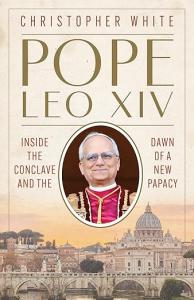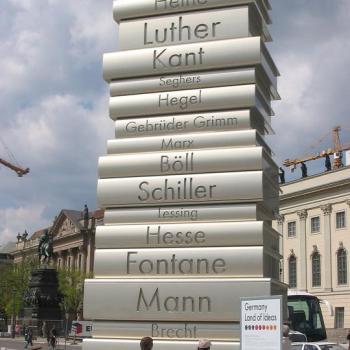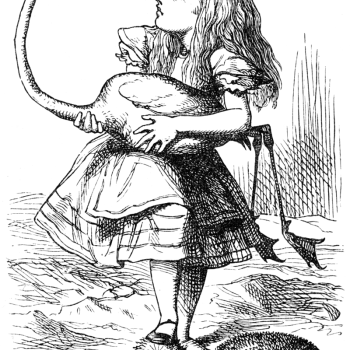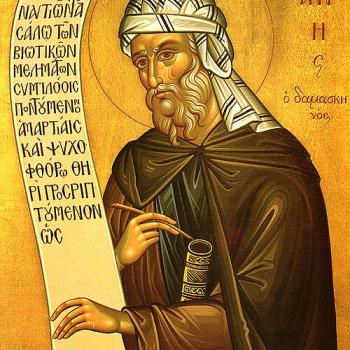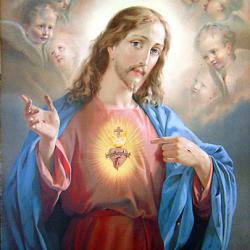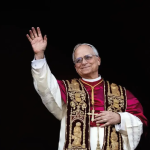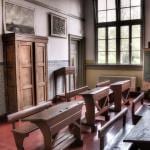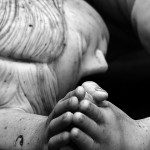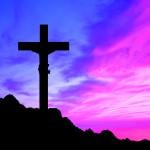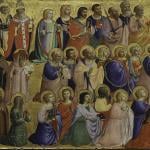The catalogue of Catholic books continues to grow year after year. Various Catholic authors have racked their brains and souls through prayer and research to bring to light their ponderings of the Catholic faith in newly published books. The same age-old doctrines and spirituality are brought to life in 2025 as Catholic authors give different takes on familiar subjects and present new tales of faith-filled individuals living out their spiritual lives in this physical world. Here is a selection of some of those writers who have gotten their books to print in the Jubilee year of 2025. There are more good books out there that are not on this list waiting to be read but you can’t read or know about them all. But you can know about these books and authors and maybe read them if you wish.
Actually then reading most books I want to read I make lists of books I want to read.
There are so many things to read and not enough time or attention span to do it..
In Defence Of Book Lists | An Introduction The The Catholic Bards Book Lists
And Now
25 New Catholic Books in 2025
Incredible Catholic America:
Smallest, Tallest, Oldest, Oddest (2025)
by Marion Amberg
Our Sunday Visitor
Who was the first American president married by a Catholic priest? John F. Kennedy, right? Wrong! Where is the country’s oldest reference to the Blessed Mother? (Think Vikings.) Which American priest declared venerable can boast a vial of blood that’s still liquid? (He’s the envy of Saint Januarius.) Where is the world’s largest rosary collection? (Hint: It’s not in the Vatican.) Which bishop was the first to wear a wig? Who is the youngest American up for sainthood? Where is America’s only drive-through Stations of the Cross? How did the country’s oldest religious folk art begin?
The answers to these questions are just the beginning of the incredible facts, trivia, people, and lore in Catholic America. From Maine to Hawaii, the Bering Strait to the Gulf of Mexico, the United States of America abounds in Catholic trivia. Some trivia is regional, such as “Muskrat Fridays” in Downriver Michigan or the “Shoe Shrines” in the American Southwest. Other trivia is one of a kind: How many churches can boast a sauerkraut stone as a building stone? A North Dakota church can. Where did the “War of the Pews” take place? Read on to find out!
Yet this book is more than a collection of random facts and trivia. It also presents vignettes of heroic men and women who stood in the gap for the fledging American Catholic Church.
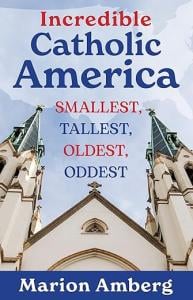
The Frassati Field Guide:
An 8-Day Ascent to Heroic Virtue with Blessed Pier Giorgio Frassati (2025)
by Bobby Angel
Ave Maria Press
As you venture ahead, I hope that you are encouraged by the example of this young man who lived a life fully alive before he was called to heaven at the age of twenty-four. We shouldn’t fear giving our energies to God (however young or old we are), for he can transform all of our limited and meager efforts into something beautiful for others.
One of the enduring attributes of Frassati is his “ordinary” holiness. He wasn’t a hermit or mountaintop mystic or prolific pope—he was a young student. He played pranks on his friends, he fell in love, he struggled to study, he loved to horse around—and he prioritized his relationship with Jesus Christ. He is a great example of what the Church calls the “universal call to holiness,” which affirms that everyone—priest, nun, mother, businessman, student—can be transformed by God’s grace to become a saint.
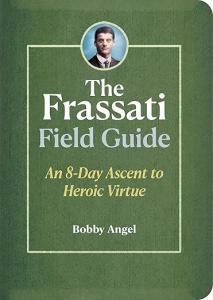
What Christians Believe:
Understanding the Nicene Creed (2025)
by Robert Barron, Matthew Levering
Many people have bought into the false story that God’s existence would make them smaller; God would take all the oxygen in the room and restrict their flourishing. But the Christian understanding of God is the very opposite. Indeed, the “intelligible form and intelligent purpose” that scientists rely upon when they study the atom, the cosmos, and the Big Bang are the fruit of the Creator who joyfully and graciously bestows, rather than competes with, the being and integrity of the world.
The Incarnation stands as the great shock of the Nicene Creed. It is shocking but also fitting. Pouring himself out in love in creating, God pours himself out in love in restoring his fallen creation. In Jesus, God unites himself with his suffering creatures in order, as the long-awaited King of his people Israel, to lead the whole world to God. God can do this because he is not a being among beings; the Incarnation is not an amalgamation of two beings. Barron remarks, “The radicality of [Christ’s] program of love is grounded in his Father’s manner of being—which is to say, God’s indiscriminate pouring forth of love.” In Christ Jesus, God reveals his nature: love in a gloriously Triune form. Whereas we might want a superhero god, as in Hollywood movies, the true God comes by the path of self-sacrificial charity. This is the path of his inaugurated kingdom, the Church: the path of the Nicene Creed that we follow unto death—and unto Life.
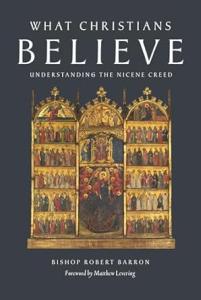
From Silence to Silence:
A Benedictine Pilgrimage to God’s Sanctuary
by Fr. Francis Bethel OSB
TAN Books
I vividly remember my first visit to the Benedictine abbey of Notre Dame de Fontgombault in France. I had been told that Fontgombault had ancient, beautiful buildings, but, as that information had not entered my imagination, I was surprised as the taxi pulled alongside the ten-foot stone wall that enclosed the abbey grounds and then drove around to the grand portal of the twelfth-century abbey church. My three companions and I went in and were instantly captivated by a place drenched with centuries of prayer and silence, vaulted high and arched, shadowed in mystery.
We arrived just in time for Vespers and sat down in the front row. The stillness of the place enveloped us. Suddenly, a monk appeared in the sanctuary and grasped a rope that reached all the way up to the lofty bell tower. He began pulling the rope, and we heard the calm sound of a bell ringing regularly and slowly: bong … bong … bong. A long line of eighty monks entered the sanctuary two-by-two, serenely, graciously. The bell eventually stopped, the monks knelt for a moment, and then, all together in one movement, quietly got to their feet. Next, rising out of the silence, I heard for the first time a single voice chant: “Deus, in adjutorium meum intende.” Eighty voices responded: “Domine, ad adjuvandum me festina.” Then the psalmody began.
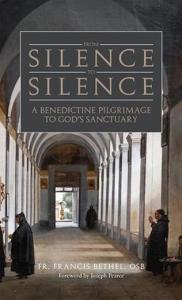
All Things Are Possible:
The Selected Writings of Mother Cabrini
by Dawn Marie Beutner
Ignatius Press
Every canonized saint of the Catholic Church exemplifies some ordinary talent, gift, or virtue to such a degree that it becomes extraordinary. Saint Frances Xavier Cabrini’s gift, which saw her through many trials, was tenacity, or the virtue of perseverance. Her ability to not give up in the face of difficulty, which she experienced continuously throughout her life, came not from natural talent, but rather from her intimate, mystical relationship with Christ.
Her mysticism, a transformative experience of God, witnessed to a soul enthralled by the beauty of Christ who alone captured her heart. Her tenacity of spirit became the virtue of perseverance in the face of challenges through the power of Christ. May Saint Frances Cabrini intercede for all those who lack hope when life’s troubles abound.
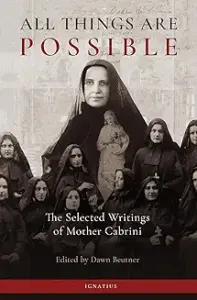
How to Talk About Jesus with Anyone-
Tested Techniques for Planting Seeds and Saving Souls (2025)
by Steve Dawson,Cy Kellett
Catholic Answers Press
It’s the one thing we all should be doing but probably aren’t. (Or not enough.) Exercising? Eating right? Calling Mom? No: spreading the good news about Jesus Christ and his salvation. This job isn’t optional. It’s an explicit command from the Lord himself. So why do we work hard to be good Catholics in so many other ways—going to church, obeying the commandments, persevering in prayer—but make excuses about our reluctance to evangelize?
In How to Talk About Jesus with Anyone, Steve Dawson (St. Paul Street Evangelization) teams up with Cy Kellett (Catholic Answers Live) to help you replace those excuses with a tested plan for going from timid and hesitant to confident and zealous in your daily duty to save souls. Building on decades of experience sharing the saving truths of the gospel, Steve and Cy will show you:
• Why you don’t have to be an extrovert or hold a Ph.D. in theology to evangelize effectively
• How to tell when people are receptive to hearing the gospel (hint: more often than you think!)
• The one weird trick that opens the door to dialogue (and the door-closing mistakes to avoid)
• How to guard against ways the devil will try to stop you . . . and more!
How to Talk About Jesus with Anyone will help you turn everyday encounters into opportunities to gift others with life-changing truth. In so doing, you will fulfill Christ’s command, swell the ranks of heaven, and—perhaps unexpectedly—discover the secret reward of the evangelist: joy. -Amazon Description
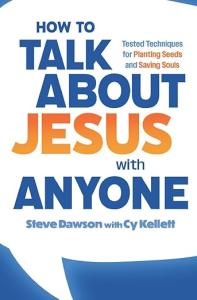
The Miracle Book:
A Simple Guide to Asking for the Impossible (2025)
by Anthony DeStefano
Sophia Institute Press
If you’re reading these words right now, you probably need a miracle. I have no idea what kind of miracle you need. Are you facing surgery, perhaps? Maybe the miracle you need is financial in nature. Are you struggling with a compulsive habit or addiction? Whatever the problem I’m going to assume that you want something and that whatever it is seems out of reach and humanly impossible to obtain. I’m going to assume that you have nowhere to turn but to God. Maybe you haven’t talked to Him in a long time, or maybe you pray to Him every day. Maybe you’re an atheist or an agnostic, or maybe you’re a devout, Bible-believing Protestant or an orthodox, churchgoing Catholic. It doesn’t really matter at this moment — at least not to you. What matters is that you desire something badly. And this time it’s serious. This time you mean business. This time you really need supernatural assistance, and you need it now. As the saying goes, “There are no atheists in foxholes.” When you’re under enemy fire and you feel as though you or someone you love might perish at any moment, there isn’t anything you won’t do or try in order to get help. If that’s where you are, I understand. Believe me, I’ve been there. And I’ve written this book to help you.
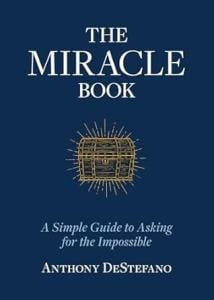
Struck Down, Not Destroyed:
Keeping the Faith as a Vatican Reporter (2025)
by Colleen Dulle
Image Books – Penguin Random House
At risk of sounding too pious, my search for God and for the truth were always one and the same. It is probably unsurprising that I became a reporter, even less so that I became one who focused on the Vatican. As a teenager I had enjoyed explaining complex church topics in an accessible way that I could only reach through a thorough understanding; as an adult, that meant digging into the endless complexity of the institutional church, mired in history and scandal, the exact things that people want explained.
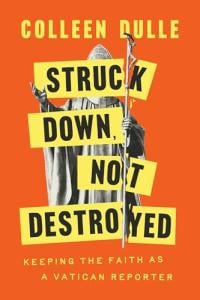
The Sacred Heart: A Love for All Times
by Dawn Eden Goldstein MDS
Loyola Press
Given that devotion to the Sacred Heart is really devotion to the love of Jesus, it is not surprising to find that it has been practiced in one form or another since the earliest days of the church. If we look for its origin, we will find that the scriptural foundation of the devotion to the Sacred Heart appears in the writings of St. John, the Beloved Disciple. John’s Gospel is especially important in the history of the devotion because it is the only Gospel that records that Jesus’s heart was pierced by the lance of a centurion immediately after he expired on the cross.
John was able to write authoritatively about love because he listened to Jesus’s Sacred Heart. The real meaning of Jesus’s Sacred Heart is found not in his physical organ but rather in the love with which he willed to take on a human nature to redeem us. In the same way, the real evidence that John listened to Jesus’s heart is that he sought to emulate Jesus’s love.
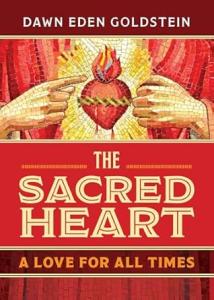
A White Catholic’s Guide to Racism and Privilege (2025)
by Daniel P. Horan
ORBIS
As important as my faith tradition has been and remains, the Church that I love and have dedicated my life to serving has nevertheless failed me and countless others at times when it comes to addressing racism. I don’t recall ever hearing a homily or religious-education teacher talk about racism, racial justice, or white supremacy in any meaningful or memorable way. My home parish is the largest in a midsize city, one that nurtured my vocation to religious life and priesthood, but one that also knew little racial or ethnic diversity. Most of the people who worshipped in my parish looked like me or my brothers or my parents or my grandparents, all of whom are white. There were a few families of color—a couple families of African descent, a few Latinx families, one family of Indigenous people—but their presence rarely registered in the sea of white faces in a parish that considered diversity largely in terms of whether one was of Irish or Italian heritage.
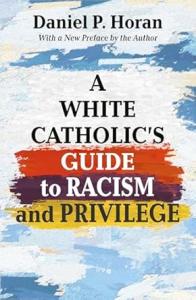
A Beautiful Second Act:
Saints and Soul Sisters Who Taught Me to (Be a Badass) Age with Grace (2025)
by Maria Morera Johnson
Ave Maria Press
If growing old gracefully was a goal powered by the desire to look and feel better physically and emotionally, then aging with grace—using my spiritual gifts to draw closer to the Lord—is even more important.
What our parents and grandparents experienced in the communal fold, with multiple generations living in close proximity, my generation is experiencing within an ever-shrinking nuclear family. The “heart space” that helped carry transitions is now borne by each of us individually.
The good news is that it doesn’t have to be like that all the time. We can reclaim that “heart space” within us: our relationship with God, the Blessed Mother, and the Communion of Saints. As I began to face the changes and challenges of the second half of life, I turned to my “saint posse” to find just the right patron for what I was experiencing, confident I would find that “What, you too?” moment of connection with a holy model that would pray for me and show me a way to holiness.

From Calvinist to Catholic (2025)
by Peter Kreeft
Ignatius Press
All our lives are stories. That is why storytelling, or narrative, is the most fundamental and universal of all human arts. And since a story requires a storyteller, our story is evidence for a Divine Providence. For if not, then our art of storytelling is inherently deceptive, for it is our imposition of design and order, our illusion of free choice and meaning on an objective reality that is formless, random, logos-less, void of order and meaning and design, “full of sound and fury, signifying nothing”, in the words of Macbeth, who is on his way to damnation. That is why no determinist (like B. F. Skinner) can write good novels. (His Walden Two is boring and ridiculous.)
The fact that you, a person with free will, have freely made the meaningful choice to read this book, this story, a story about another person who has also freely made meaningful and important choices in his life, is a very strong reason for believing in both free will and the existence of God. If there is design, there must be a Designer. If there is a play, there must be a Playwright. If life is a story, there must be a Storyteller.
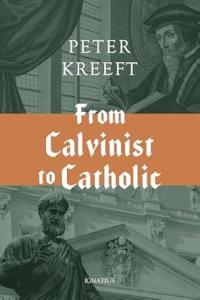
Darwin and Doctrine: The Compatibility of Evolution and Catholicism
by Daniel Kuebler
Word on Fire
“Then the Lord God formed man from the dust of the ground, and breathed into his nostrils the breath of life” (Gen. 2:7). This line, from the second Genesis creation account, aptly reflects the enigma that is man. As a species, we have our roots firmly planted in the dust of the earth. We are composed of the same stuff as frogs, planets, and stars. The carbon found in our bodies is no different than the carbon formed via the fusion of helium atoms inside stars or the carbon found in a grain of wheat. In fact, it is one and the same. The same carbon that was formed inside a star long ago is now a carbon atom in a grain of wheat. Likewise, that same carbon from a grain of wheat can, through processes of digestion and metabolism, become part of my body. We are fully integrated into the dynamic processes of the physical world.
This dichotomous union of dust and breath, of worldliness and transcendence, is what Scripture tells us man is. But what exactly does that mean?
One of the most common questions that my students ask me regarding evolution is the following: “What is the Church’s position on evolution?” This seems to be the million-dollar question that Catholics have regarding the evolution/creation debate. Interestingly, the guidance provided by the Church on this matter is not as straightforward as one might expect. In fact, when it comes to a position on the science of evolution, it turns out that the Church doesn’t have one. Just as the Church doesn’t have an official position on atomic theory or the theory of general relativity, the Church doesn’t have an official position on the science of evolutionary theory.
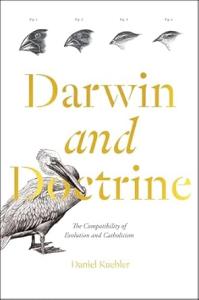
Behold the Heavens:
Discovering God Through the Night Sky (2025)
by Fr James Kurzynski,Br Guy Consolmagno (Foreword)
Our Sunday Visitor
When was the last time you looked for animals in the clouds? It’s something we all do as children. The sky, to the youthful heart, is a place of awe and wonder, a place where our daydreams become reality and the world is our playground. For me, these memories evoke peace and joy, a time when I worried about nothing more than the warmth of the sun on my skin, with peace in my heart and the sound of songbirds on a pleasant summer’s day.
Did you ever wonder if heaven was in the clouds? Again, a typical daydream of a healthy child. So powerful was this question in my youth that I developed an adolescent theology of heaven being on the light, puffy clouds on a warm day, while the devil rode upon the storm clouds with lightning and fury. Of course, time, age, and experience showed my childhood wonderment to be misinformed. Still, be it seeing mythical animals in the clouds or contemplating what heaven was like, I miss those innocent days.
A less universal experience is to bring that same wonderment to the night sky. For some, gazing into the night sky might have been nearly impossible if you lived in the city. Others may have been afraid of the night, clinging instead to the comforts of a well-lit home. Thankfully, I didn’t suffer from either issue in my youth. My parents live in rural central Wisconsin, which blessed me with beautifully dark nights. I was never afraid of the night — instead, I was often outside, just looking at the stars. My first connection with what we call astronomy wasn’t through scientific or theological questions, but beauty, beauty that filled me with wonder.
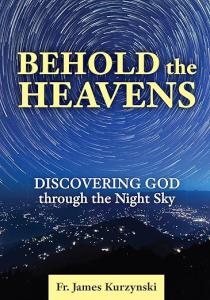
Faith in Crisis:
Critical Dialogues in Catholic Traditionalism,
Church Authority, and Reform (2025)
edited by Andrew Likoudis |
En Route Books and Media
“Faith in Crisis is a godsend for our times. In the post-conciliar Church, it seems there is a need to get back to basics when it comes to defending the Faith. It used to be the so-called ‘liberals’ in the Church who were known for their refrain, ‘That’s not infallible, so I don’t have to believe it.’ Today, we find those words coming from some calling themselves traditionalists who are really not traditional at all. These have become Catholic Fundamentalists who have a stunted understanding of what ‘tradition’ truly is. The ‘living tradition’ of the Magisterium as championed by Vatican II, the Catechism, and all of the post-conciliar popes, has been misconstrued as a dead and static understanding that seems to challenge nearly every nuance and development of thought that comes from the Magisterium of the Church post-1962 (cf. CCC 639; 113; 2663, etc.). Andrew Likoudis has done the Church a great service by presenting the teaching of the living Magisterium, that can serve as a guide for all to truly ‘listen to what the Spirit is saying to the churches’ specifically for the Church and our world today (Rev. 2:7; 11; 17; 29; 3:6; 13; 22).”
– Tim Staples, Senior Apologist, Catholic Answers
Some of the contributors include Jimmy Akin, Henry Matthew Alt, Dave Armstrong, Mike Aquilina, Fr. Matthew Mary Bartow, Robert Fastiggi, PhD, Pedro Gabriel, MD, Mike Lewis, James Likoudis, DD (h.c.), Michael Lofton, MA, and Cardinal Robert Sarah
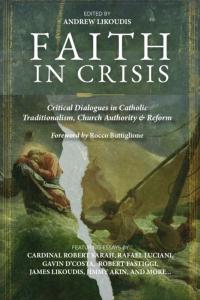
Carlo Acutis: A Saint in Sneakers (2025)
by Courtney Mares
Ignatius Press
Carlo Acutis was an ordinary teenager with an extraordinary love for the Eucharist. He was a child of his time, fascinated by technology and drawn to the internet and computer coding. Though his life was brief—he died of leukemia in 2006 at the age of fifteen—Carlo’s example left a profound influence on people of all ages. His unshakable devotion to the Real Presence of Jesus in the Eucharist, coupled with his kindness, humility, and joy, continues to inspire.
Hundreds of thousands of pilgrims have flocked to his tomb in Assisi, Italy, where he has been famously laid to rest in Nike sneakers—a visible reminder that holiness is possible for everyday people living in today’s world. Catholic schools now bear his name in England, Mexico, Malawi, Chile, Australia, and the United States. Statues and stained glass windows of Carlo adorn churches from Europe to the Americas. And his Eucharistic miracles exhibition has been displayed in thousands of parishes across the globe, including in the Philippines, Argentina, Vietnam, China, and Indonesia, spreading his message to millions.
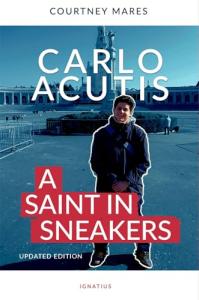
To Heights and unto Depths:
Letters from the Colorado Trail (2025)
by Fr. John Nepil
Ignatius Press
The setting of our story is the Colorado Trail. Described as “the trail to nowhere”, the Colorado Trail was a series of disconnected paths that, coming together in 1987, traverses horizontally across the Colorado Rockies. Spanning 486 miles, it crosses eight mountain ranges, ascending nearly 90,000 feet in elevation and descending the same. It begins in a passageway just southwest of Denver and concludes on the other side of the Rockies in the town of Durango. Holding to the Continental Divide and remaining mostly above 9,000 feet, it is considered by many to be the most beautiful of America’s long-distance trails.
In July of 2022, I resolved with three men to undertake the challenge of the Colorado Trail in the form of a “thru-hike” (i.e., doing it in one go). Other groups of priests and young men would join us along the way and make up part of the adventure to be recollected in these letters.
Let us then set out on the Colorado Trail, that in encountering the love of Christ, we may be led to heights and unto depths (cf. Eph 3:18–19).
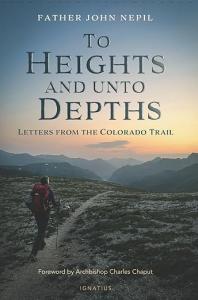
The Faith Unboxed:
Freeing the Catholic Church From the Containers People Put It In
by Andrew Petiprin
Catholic Answers Press
The Faith is bigger than any institutional box. It is more than a denomination, a club, or an ideology. If a person is looking to escape the world by turning to the Catholic faith, he has chosen the wrong box. Likewise, the Faith is not a prison for self-loathers who are afraid of freedom. Nor again do the Faith’s precepts underlie a dictatorship imposed upon people who would prefer to be free but are held down by the pope’s oppressive red slipper. Finally, being Catholic is more than a feeling, and more than an individual preference for self-actualization.
When we unbox the Faith, we find it fits no categories and resists all labels. In my journey into the Faith, I have found it helpful to approach the Faith from many angles as a way of articulating what it actually is. In an age where the Church is increasingly caricatured and regarded in a negative light (if it is regarded at all), a good way to talk about why someone would want to join it or stay in it may be to confront some of these misperceptions—to think outside the box.
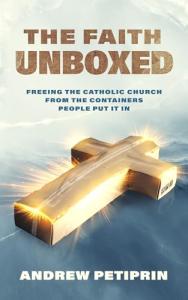
The Hell There Is:
An Exploration of an Often-Rejected Doctrine of the Church (2025)
by Monsignor Charles Pope
TAN Books
The work to render us perfect and to attain “the holiness without which no one may see the Lord” is not an easy work. It requires extensive conversion for us wherein the Lord, by the power of His cross, puts sins to death and raises grace to life. We must die to sin so that Christ may live in us. And there are many who simply do not want to follow this path since it involves giving up some of their favorite sins. They reject the kingdom of God because they love the world too much. The process of conversion from the things of this world to God is arduous at times and involves substantial effort. Many, knowing this implicitly, reject the call and the promise that grace can make all things possible. The road to heaven is narrow because it is the way of the cross, and too many do not want to hear about crosses or sacrifices of any sort. It is in this context that the doctrine of hell makes the most sense. Hell exists because God respects the freedom of every individual to accept or reject His offer of the kingdom.
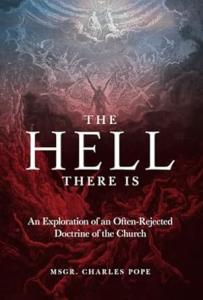
Hope: The Autobiography (2025)
by Pope Francis, Carlo Musso, Richard Dixon (Translator)
Image Books – Penguin Random House
The book of my life is the story of a journey of hope, a journey that I can’t imagine separated from that of my family, of my people, of all God’s people. In every page, in every passage, it is also the book of those who have traveled with me, of those who came before, of those who will follow.
An autobiography is not our private story, but rather the baggage we carry with us. And memory is not just what we recall, but what surrounds us. It speaks not only about what has been but about what will be. Memory, in the words of a Mexican poet, is a present that never ceases to pass.
It seems like yesterday, and yet it’s tomorrow.
People often say “wait and hope”—so much so that the word esperar in Spanish means both “to hope” and “to wait”—but hope is above all the virtue of movement and the engine of change: It’s the tension that brings together memory and utopia to truly build the dreams that await us. And if a dream fades, we need to go back and dream it again, in new forms, drawing with hope from the embers of memory.
We Christians must know that hope doesn’t deceive and doesn’t disappoint: All is born to blossom in an eternal springtime.
In the end, we will say only: I don’t recall anything in which You are not there.
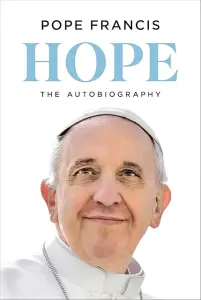
The High Hallow:
Tolkien’s Liturgical Imagination (2025)
by Ben Reinhard
Emmaus Road Publishing
What does it mean to call The Lord of the Rings “religious and Catholic”? These terms have been defined only vaguely, if at all—and so have been applied in a bewildering number of ways. Thus, Tolkien’s work has been read as Thomistic and Augustinian and Newmanian; or in dialogue with Catholic novelists like G. K. Chesterton or Flannery O’Connor; or as part of a broader Catholic intellectual revival, or as a representative of twentieth-century Christian humanism.
Strictly speaking, to be religious is to participate in the virtue of religion, which (according to its classical definition) “consists in offering service and ceremonial rites to a superior nature”—that is, God. Catholic, probably, requires no definition—though it is worth remembering that grace and prayer are at the heart of the Church. If we are to take Tolkien’s meaning precisely, then, The Lord of the Rings is rooted in the practice of religion, as defined by the Catholic Church. Seen in this light, it is clear that sharing points of contact with Catholic thinkers is, in the end, not sufficient to make a work fundamentally Catholic. Being grounded in the liturgy—that is, the ordered and regular prayer of the universal Church—is.
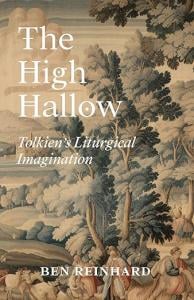
Unshakeable:
Building a Life of Virtue in a World of Chaos (2025)
by Fr. Mike Schmitz
Ascension Press
We can grow in courage by reading stories of courage. We can grow in love by understanding what love really looks like. We can grow in virtue by standing steadfast in what we believe like the brothers and their mother in the book of Maccabees. Starting today, when we are surrounded by a culture that mocks virtue, we can feed ourselves upon stories that really do uphold what is good. Ultimately, these stories of virtue have to mean something for our lives. None of us can lose our faith the way we can lose our car keys. We either give it away or we let it decay because we don’t use it. Do not give it away. Do not let it decay. Be rooted, unshakeable, and faithful. Because as long as you let your values become your virtues, the Kingdom of God wins. But if we won’t live our values, if we won’t let them be our virtues, the battle may be lost.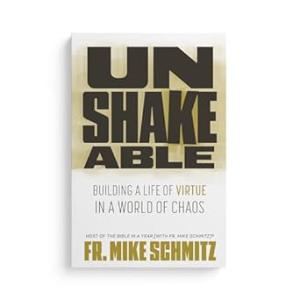
How to Be a Saint:
An Extremely Weird and Mildly Sacrilegious History
of the Catholic Church’s Biggest Names (2025)
by Kate Sidley
Sourcebooks
A saint is a person who has died and gone to heaven. That’s it! Everyone who has died and gone to heaven is a saint, but here’s the catch: Catholics only give the title of capital “S” Saint to people they can absolutely prove are in heaven. How do you prove someone is in heaven? Through the process of canonization, which you are about to begin!
Before you kick off your journey to sainthood, there is one small detail you need to take care of: in order to become a Catholic saint, first you have to be a Catholic. It’s a minor, annoying technicality, like how you have to show ID before you can buy Sudafed. Catholicism is a two-thousand-year-old religion with over a billion members worldwide and a rich history that has influenced everything from art to politics to the calendar.
Basically, all Catholics are Christians, but not all Christians are Catholics. It’s like how all squares are rhombuses but not all rhombuses are squares. Now you’ve learned two things!
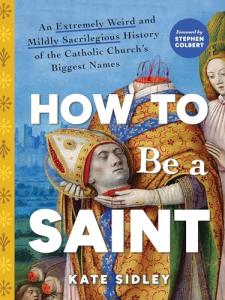
Canceled:
Twelve Catholic Heroes That History Turned Into Villains (2025)
by Steve Weidenkopf
Catholic Answers Press
It is not shocking that Catholics have been vilified and scapegoated throughout history. Catholics are called to imitate Christ and should expect the same treatment as their Lord, who said, “A servant is not greater than his master. If they persecuted me, they will persecute you” (John 15:20).
Cancelation, scapegoating, and persecution constitute core themes in the 2,000-year history of the Church. The honor, reputation, and memory of individual Catholics have been attacked by enemies of the Faith seeking to discredit the actions of the Church.
The modern pantheon of villainous Catholic personages of the past is vast and includes specific individuals, such as Popes Innocent III and Pius XII, Mary Tudor, Christopher Columbus, and Marie Antoinette, as well as groups of people, such as crusaders, inquisitors, and conquistadors. These individuals and groups have been canceled by Enlightenment thinkers, Protestant apologists, secularists, and even so-called “Catholics” who take the name but not the belief of the Church.
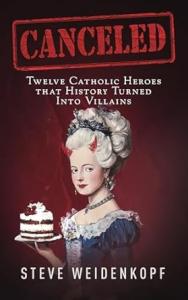
Pope Leo XIV:
Inside the Conclave and the Dawn of a New Papacy (2025)
by Christopher White
Loyola Press
While most Americans have gotten used to hearing that the next presidential election is “the most important in the history of the country,” the same can’t exactly be said of papal elections, which go back two millennia. But before 133 cardinals entered the Sistine Chapel on May 7, several had told me they believed that the conclave of 2025 might be the most important in at least sixty years.
Pope John XXIII’s death on June 3, 1963, from stomach cancer at age eighty-one, presented a time of testing for the Catholic Church. Just one year earlier, the pope had presided over the opening of the Second Vatican Council, a landmark event in the history of Catholicism.
When the council was announced on January 25, 1959, the news sent shockwaves through Rome and beyond. Councils are rare in the life of the Church. At the time of what would come to be called Vatican II, there were only twenty previous councils, and each was marked by both great promise and great trepidation. Speaking to nearly 2,500 bishops from all over the world at the start of the council in 1962, Pope John said that it was time for the Church to “look to the present, to the new conditions and new forms of life introduced into the modern world which have opened new avenues to the Catholic apostolate.”1 While many past councils, often concerned with suppressing potential heresies that arose in Catholic life, had been inward looking, the Second Vatican Council was decidedly outwardly facing.
